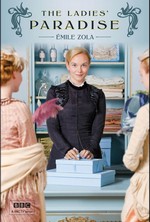Nana (Barnes & Noble Classics)
One of the book’s minor characters, who appeared near the end of the story, was a little girl named Anna Coupeau, known as Nana. The daughter of Gervaise Macquart, who already had three sons by a previous relationship, and an alcoholic laborer named Coupeau, she was predestined for a life of waste and a miserable end, it appeared. Three years later, in 1880, Zola brought out the ninth in his series, Nana, which told the remainder of the story of Anna Coupeau. Besides the sketch in L‘Assommoir, the character had another source as well: Manet’s 1876 painting, also entitled Nana, which shows a young actress in deshabille in her dressing room, turning away from applying her makeup to look directly at the viewer with an assured, slightly calculating gaze, as a stout older suitor in top hat and tails sits waiting on a couch, bisected by the edge of the frame. Zola assembled her character from a series of prominent actresses and courtesans of the day, used various bits of gossip to inform the plot, pursued his research by simply being who he was by then: a man of the world and an attendee at the theaters, receptions, salons, and restaurants of le tout Paris. The notoriety of his book exceeded even that of L’Assommoir—the first printing consisted of 55,000 copies, an outrageous figure for the time. It was immediately adapted for the stage and launched songs and caricatures and denunciations...














